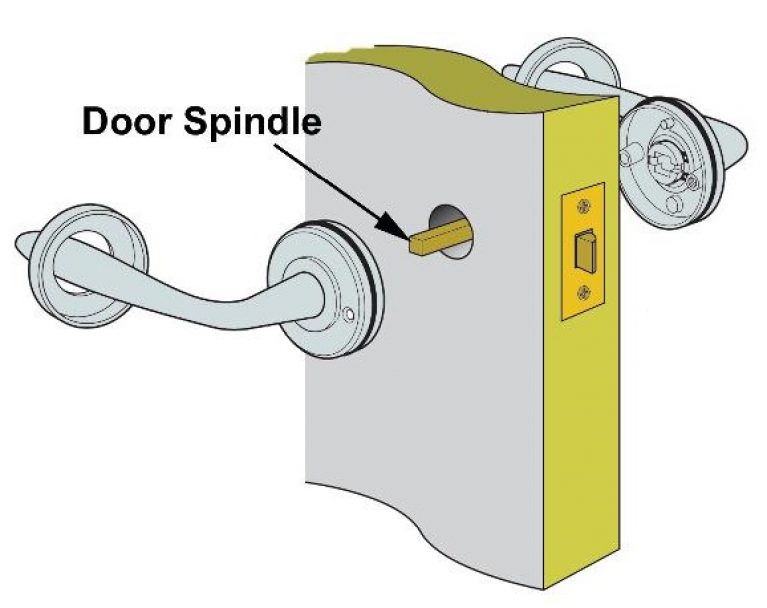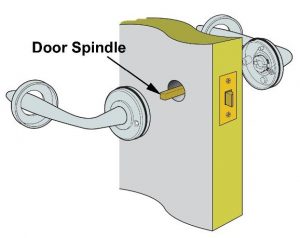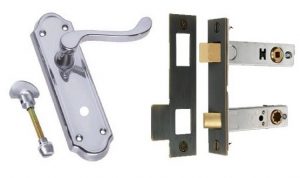What Is An Internal Door Lock?

As you would expect, an internal door lock does exactly what it says on the tin. These are locks specifically designed in order to be used on internal doors within a property. There are many reasons why you may wish to use an internal door lock such as small privacy locks on bathrooms to key requiring locks on offices or private areas of your property.
In this Wonkee Donkee internal door locks guide, we look at the different types of internal locks, what they are designed for and where’s the best place to use them.
What are the different types of Internal Door Locks?
As we touched on in the opening of this guide to internal locks there is a range of different mechanisms available in the market. In this section, we break down different internal locks by their design and purpose, with the locks getting more secure as we move down the list.
Internal Latch

You may not recognize the term internal door latch but this is the most commonly used latch in the world. An internal door latch is simply what you would think of as a regular door with a knob or a handle. This has no locking system but simply keeps a door closed by the latching sticking within the strike plate. To open the door you simply have to push down the handle which retracts the latch and allows you to open it.
Although you may not think of this as an internal locking system is does provide a small amount of security privacy hence why it fits into this category. For actual security purposes and increased privacy, internal door latches are usually combined with other locking mechanisms.
Internal Door Handles

Moving on from internal door latches we have internal door handles. This is basically the same concept as above, however, some handles have been innovated in order to provide security or privacy based on the position they sit within. For example, some door handles can be pulled upwards from the inside which prevents users from externally entering. In addition, others can change the direction or way in which doors open by what position they are in – these are more commonly used on windows and balconies in order to allow a door to double up as a window.
As with internal door latches, internal door handles can be paired up with more secure locking mechanisms in order to increase privacy and security.
Toilet or Bathroom Locks

When you think of internal locks one of your first thoughts is likely to be a bathroom or toilet lock. These locks have only one purpose and that is to provide you with privacy whilst you are in the room. There is a range of different toilet and bathroom locks available on the market from the types most commonly found in public toilets which use a sliding or turn latch to standard door locks mortice lock which uses a key.
Our advice is to choose an internal lock most suited to the needs of you and the users of the bathroom or toilet. If you have small children or vulnerable people that use this area it is probably best to use a latch or twisting mechanism which provides enough privacy to stop someone from entering but still provides an opportunity to be accessed from the outside in case of emergency.
These locks can usually be unlocked externally by placing a coin or slim blunt object into the crease and twisting away from the door frame. If you would like more rigid security for this area and you feel a twist or slide latch is not efficient, standard mortice locks can provide a more secure form of privacy.
Deadlocks and Sashlocks

Probably the most secure internal door locks available on the market today are sashlocks and deadlocks. These are designed for areas such as an office or a bedroom whereby you wish for more privacy and security.
There is a simple difference between a sashlock and a deadlock which is what makes it so easy in order to distinguish which one is which. Deadlocks do not require the use of a door handle; they use their own spring-loaded latch and require a key to open them from either side. Sashlocks work in conjunction with a door handle and key but do not use a spring-loaded latch. This means that once unlocked a sashlock will remain this way until it is locked again. On the other hand, a deadlock will automatically lock itself as soon as the latch catches.
Both of these locks can also be counted as external locks depending on the design of the internal mechanisms. The higher the security grade the safer the lock but also the more expensive.
What is the difference between Internal and External Door Locks?
The difference between internal and external locks is quite drastic and this is simply because of the purpose of what the locks need to be able to do. When looking at securing the external of your property your main concern is obviously ensuring that you have the highest quality of locks in order to prevent intruders from being able to gain access. On the other hand, internal door locks are more commonly used in order to provide privacy or prevent people in the house from entering a certain area or room.
So, to put it simply, the difference between external and internal door locks is the level of security they provide. If you wish to make internal areas of your property more secure you can use external door locks to do so. However, you cannot use internal door locks on external entrances to the property as they do not provide sufficient security to stop intruders or validate insurance policies.






